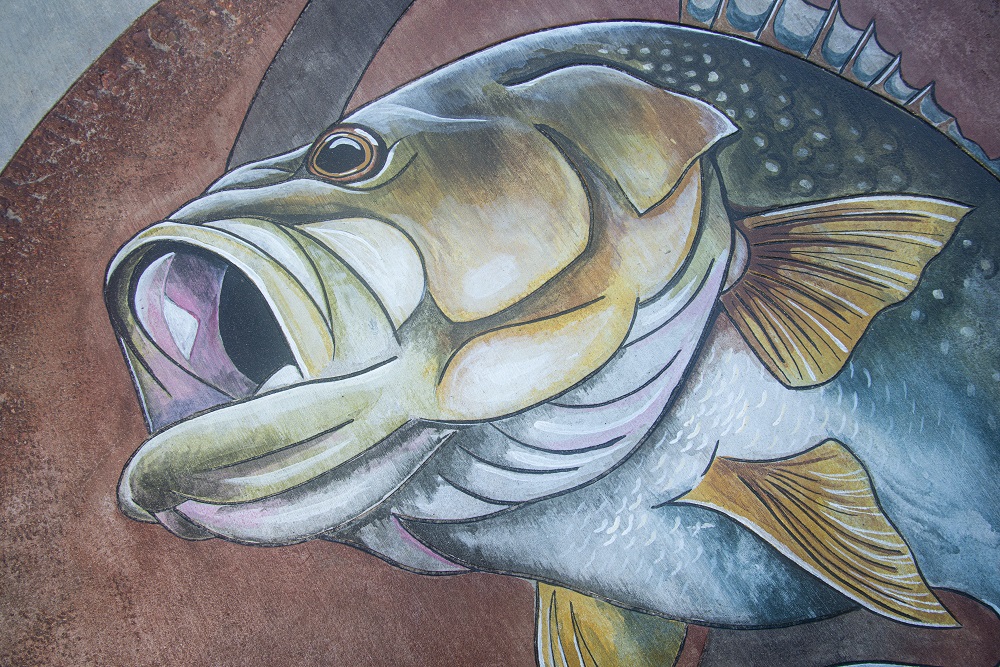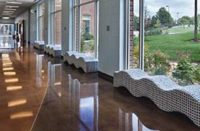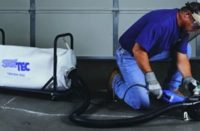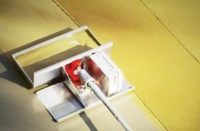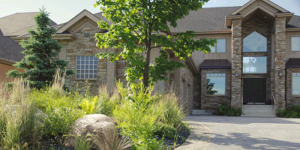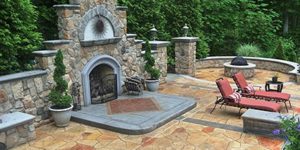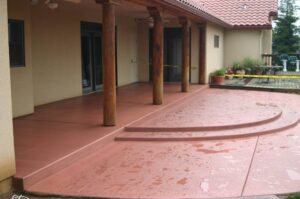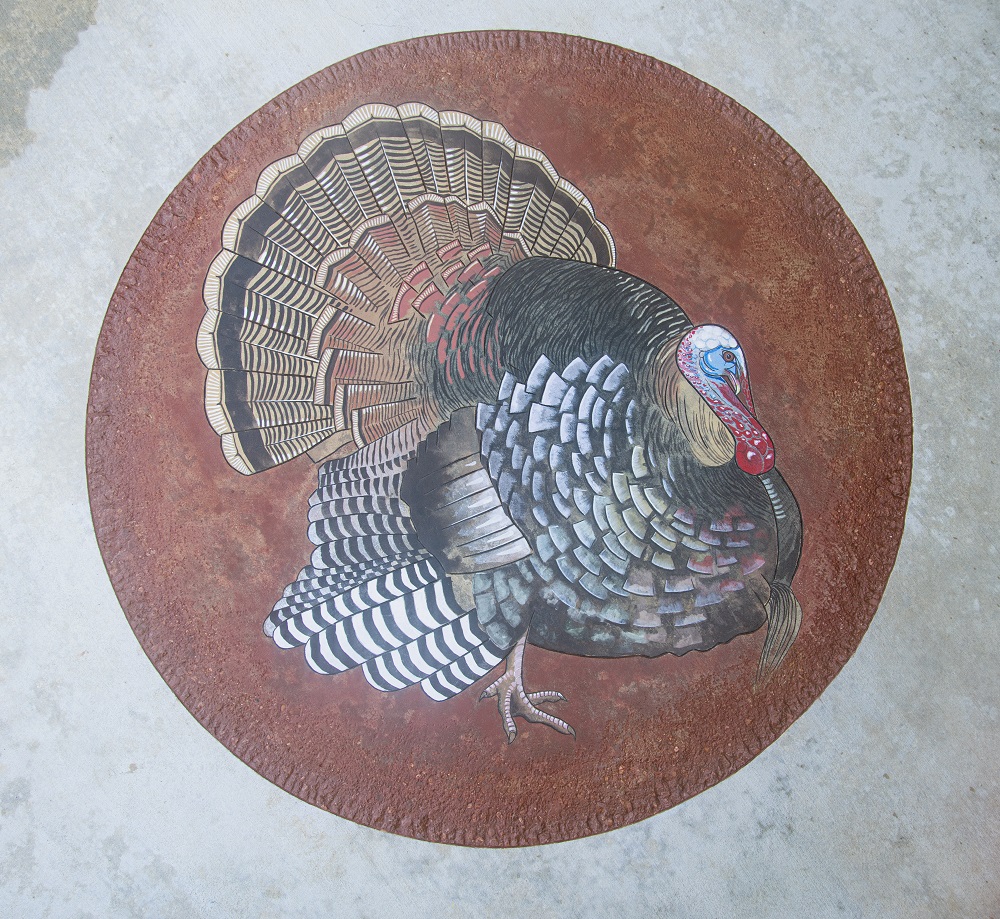
Photos courtesy of Steven Ochs
Back in 2014, Steven Ochs, chairman of the department of art and design at Southern Arkansas University and a decorative concrete artisan when he can squeeze in some time, did some work for a trucking company owner with the last name of Sindle. The work involved creating an original razorback boar for his game room. He also engraved and stained the front entryway with the letter “S.”
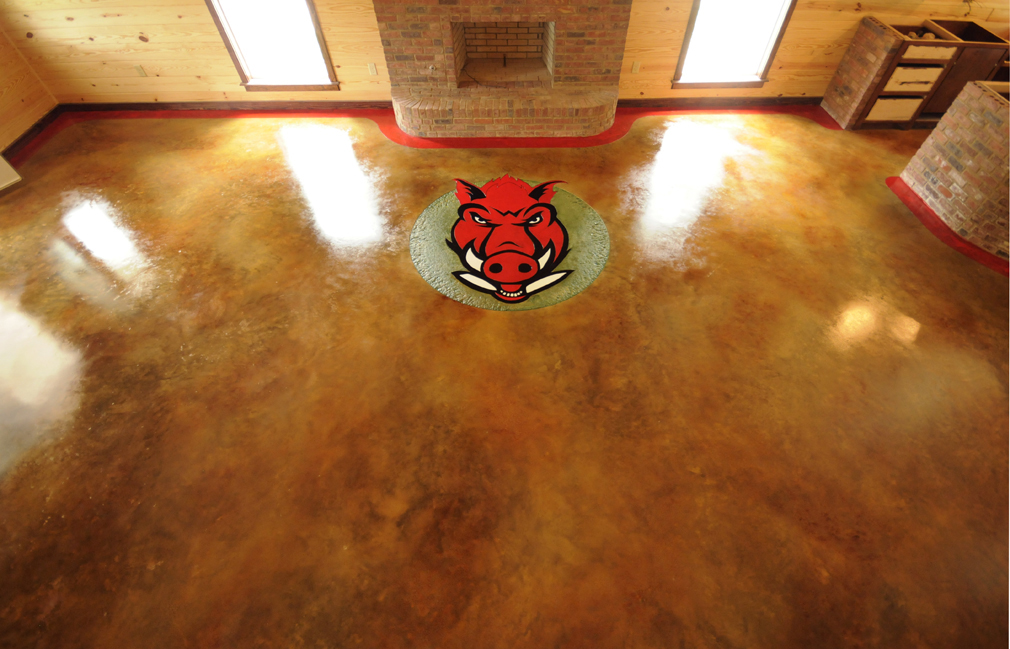
Since then, the house has been enlarged with substantial expanses of concrete and the man was in the market for more of Ochs’ art. Ochs met with him in March to discuss the possibilities. His advice: “Let’s make it personal and important to you.”
The gentleman is an avid outdoorsman, hunter and gun enthusiast who loves to camp and boat. Ochs wanted to incorporate some of the same design elements and techniques he had used six years ago for the sake of continuity. It took about a week of emailing designs back and forth before they agreed on final designs.
One thing Ochs says that made this project different from most of his was that he polished off the broom-finished concrete before starting with the design. “I didn’t want the liner texture to pull the stain along its grooves and jeopardize the integrity of my strokes,” he says.
Turkey troubles
As far as the design elements went, “The turkey, by far, was the most difficult,” Ochs says of the menagerie he painted that also include a deer and a bass. Not just in complexity, he adds, but in determining what style and technique would best convey what he was seeing in the provided reference photos.
Ochs says he was keenly aware that he kept changing his mind on the techniques and approaches he used to create the turkey. “Sometimes multiple times within a few minutes,” he confesses. “It’s not like I hadn’t thoroughly thought it through. It was just that there are multiple ways of creating these effects.” If anyone were watching, he adds, they would think he didn’t have a clue as to what he was doing.
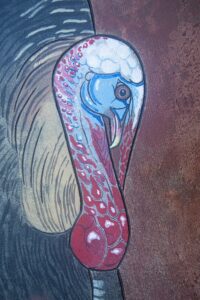 |
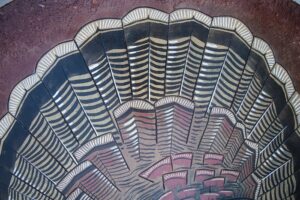 |
One technique he used was to gradually shift to different colors as your eyes travel along the bulging rows of breast feathers. As a result, it helped create the illusion of iridescence without using iridescent pigments. Since the artwork is outdoors and uncovered, Ochs chose to use only iron-based pigments for their UV-resistant qualities.
The art professor explains, “Iridescence describes the rainbow of luminous colors that seem to change when viewed from different angles. If you were to hold these feathers in your hand, most of them would be a shade of brown. Due to the feather barbules’ microscopic structures, light waves are refracted into colors such as green, red, bronze and gold. It looks much like light passing through a prism.”
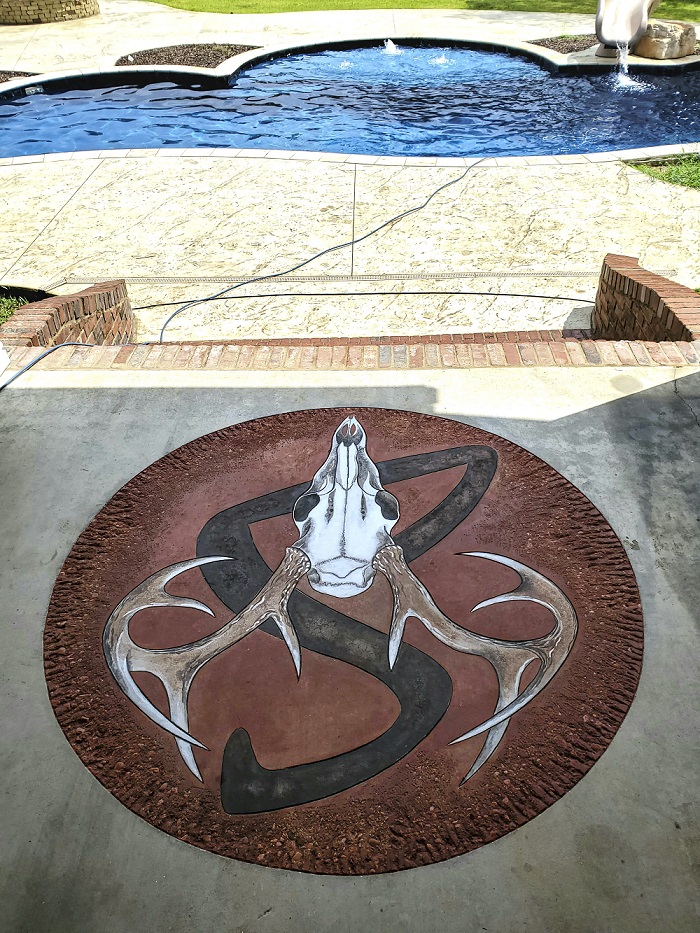
Not all the feathers were iridescent. In the tail and wings, Ochs used flat patterns with highlights. He also blackened engraved lines to create a visual rhythm.
In the end, the intricate details that went into the gobbler’s makeup came together to form one big beautiful bird.
Ochs also added a monogrammed “S” intertwined with a deer skull on concrete overlooking a free-form pool on the stained concrete patio. Further down, a jumping bass by a lake, gardens and a patio are decorated with another monogrammed “S.”
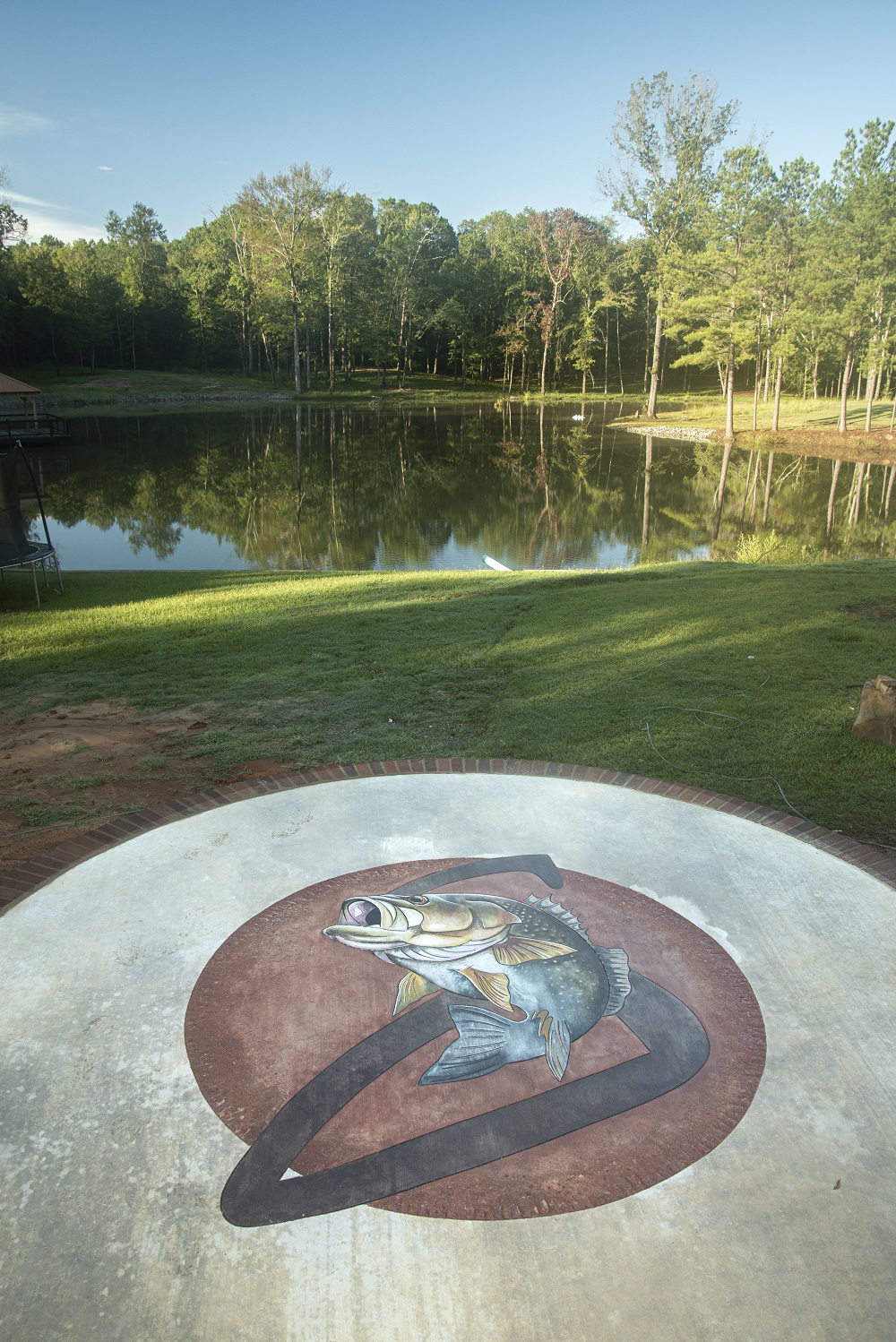
Summertime woes
In hindsight, Ochs says, July is not a good month to paint outdoor murals in Arkansas. “The day I finished the jumping bass, I had painted for 10 hours. The heat index reached 109 degrees F. I couldn’t start the turkey until a week later,” he says. He needed the week to recover.
Materials used:
- Bosch rotary hammer, a point chisel and a carbide tooth chisel
- Bosch angle grinder with diamond turbo blade and a crack chaser blade
- Smith’s Green Clean acid gel
- Smith’s Color Floor Classic Series stains
- Butterfield solvent acrylic sealer
- Angular polyresin nonslip sand
